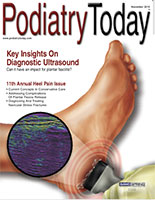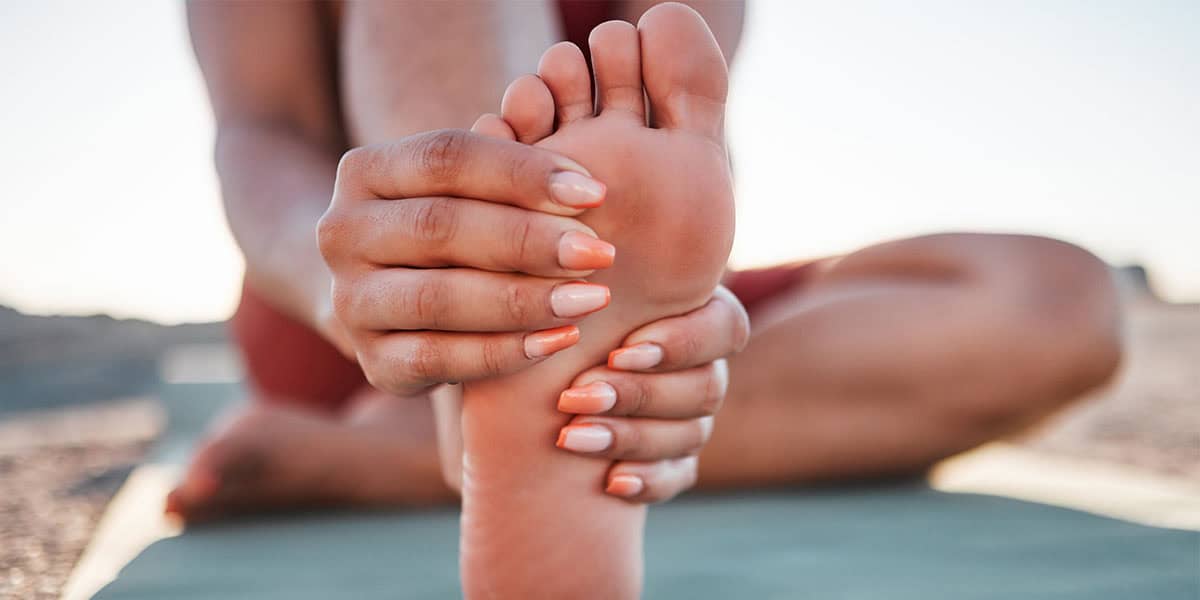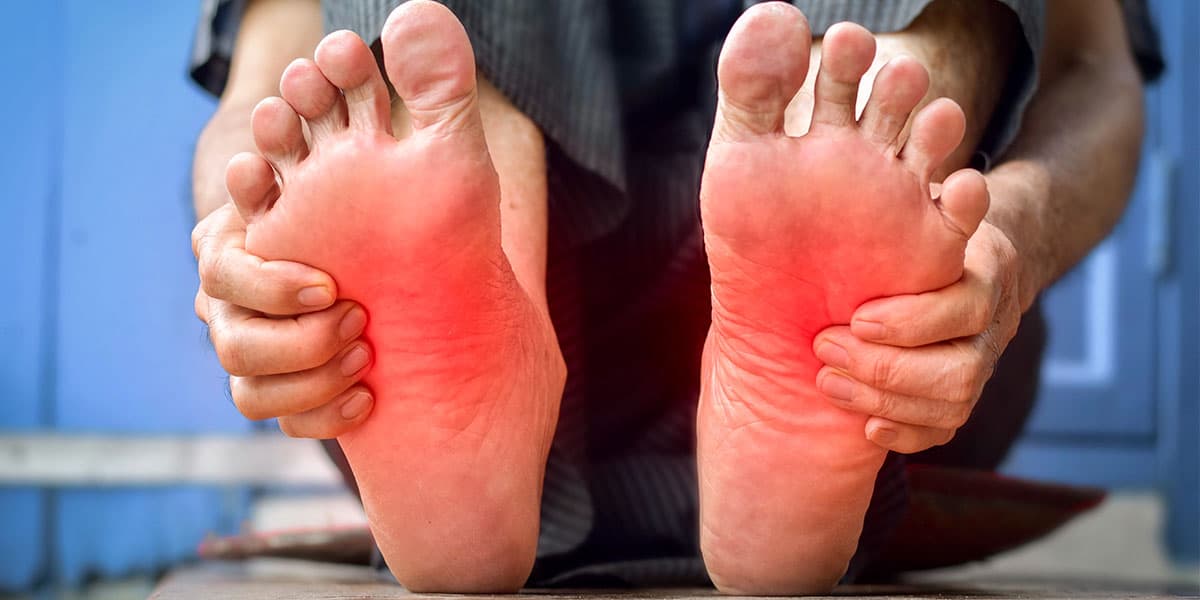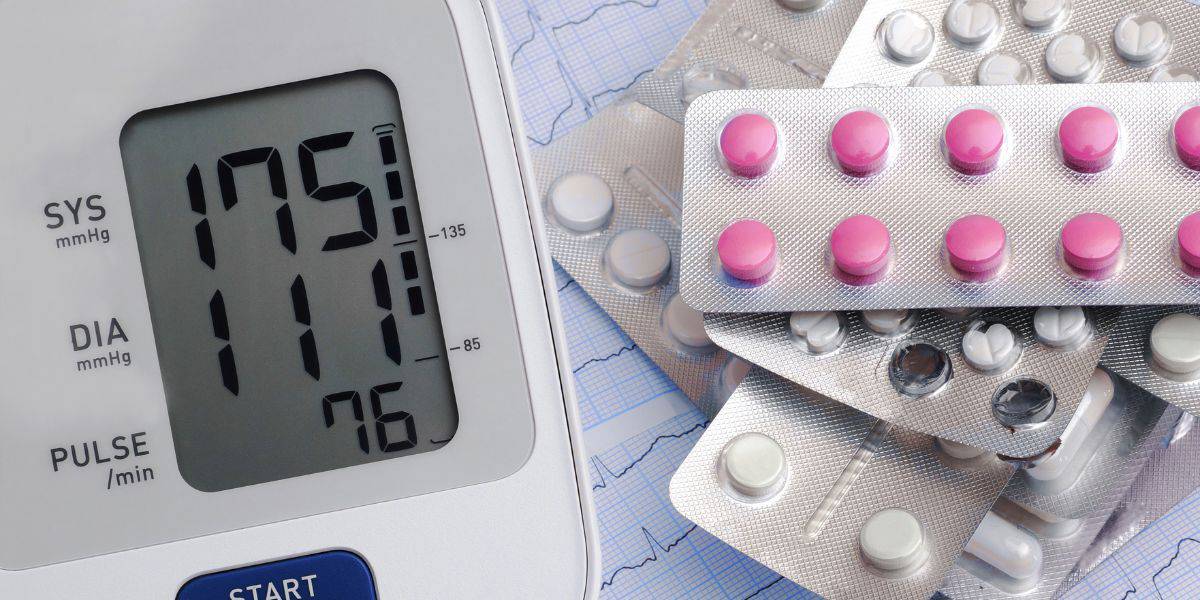- Home
- UFAI in the News
- UFAI Medical Publications
- Surgical Insights On Treating Hallux Limitus
Surgical Insights On Treating Hallux Limitus

Written by: Dr. Bob Baravarian, DPM, FACFAS
Hallux limitus, hallux rigidus and arthritis of the great toe joint are all terms we use to describe pain and limited range of motion from bone spur formation and osteoarthritic changes of the big toe.
All foot and ankle surgeons see this common problem, which has grades from level 0 to level 4.1 A level 0 joint has normal radiographic results and no pain while level 1 is a joint with mild bone spur formation but no joint narrowing. On the other spectrum are level 4 joints that show complete joint obliteration.
These three categories of joints are fairly easy to treat. A level 0 joint often does not need surgery and we mainly deal with it through shoe modifications and possible orthotic use to support the arch, and reduce pressure and stress through the first metatarsophalangeal joint (MPJ). For level 1 hallux limitus, common care is through shoe modification and orthotics with possible spur removal and/or a decompression osteotomy of the joint to realign the metatarsal head and reduce jamming and pressure in the joint.
At level 4, the most common treatment is a fusion of the great toe joint with a significant level total joint replacement. I personally do not perform total joint replacements on patients with hallux rigidus and prefer a first MPJ fusion as there is often no joint motion at the time of the initial visit and reduction of pain is the main concern.
The most common presenting levels and often the most difficult levels to treat are level 2 and level 3 hallux limitus cases. Level 2 cases have bone spur formation and joint space reduction whereas patients with level 3 hallux limitus have greater spur formation, less joint space and some level of joint obliteration. In the current scenario, I offer a common treatment algorithm for patients with level 2 and level 3 hallux limitus. If conservative shoe modification and orthotics do not help, and I deem that surgery is necessary, I often suggest a cheilectomy with possible decompression osteotomy of the metatarsal head. I make this decision at the time of surgery after spur removal. If the joint motion is significantly improved with spur removal and cheilectomy, I do not perform an osteotomy.
If there is still significant joint space narrowing and jamming or limited motion, I perform a decompression osteotomy with shortening and plantarflexion of the metatarsal head to allow improved motion. I have had good results with early level 2 hallux limitus. However, I am surprised by the level of articular damage I encounter from time to time and it leaves me with limited options.
Furthermore, in level 3 hallux limitus cases, the amount of articular damage is accentuated, resulting in further difficulty with spur removal and osteotomy treatment options as the articular surface is still poor in quality. The current implants on the market have also left me with no truly great options. I have used a hemi-implant but find this non-anatomic and limited in benefit. In addition, I have found the implant compresses into the phalanx base over time as the metal is harder than the bone. I have also used a resurfacing metal option for the metatarsal head. I like the Morris taper of this implant but have found that it can cause problems with the sesamoids and can be difficult to match up to the metatarsal head.
A Closer Look At A New Implant
I have added a new option to my arsenal for level 2 and level 3 hallux limitus that has recently received the approval of the Food and Drug Administration (FDA). The Cartiva Synthetic Cartilage Implant (Cartiva) is made out of a gel-like material that fits to the head of the first metatarsal through a 1 cm drill hole and expands to sit in the metatarsal head region. One leaves the gel material 2 to 3 mm proud on the metatarsal head and the implant expands over the edges of the drill hole, acting as a cap-like space in the joint. The surgeon would place the implant slightly dorsal of center in the metatarsal head region. The Cartiva implant not only improves range of motion but also decreases the arthritic bone on bone contact of the articular surface, resulting in decreased pain.
preferable to avoid scar formation. Furthermore, the implant only requires a 1 cm drill hole in the central portion of the metatarsal head and does not destroy the joint surface like a metal implant, which allows very easy conversion to a fusion procedure if the procedure does not work well. Finally, the implant material seems to mimic the quality and density of bone. Therefore, it does not cause bone absorption or damage like a metal implant.
How The Implant Has Changed The Author’s Treatment Algorithm
My new algorithm for level 2 and 3 hallux limitus is to educate the patient on the options of surgery including cheilectomy, decompression osteotomy and the Cartiva implant option. I alert the patient that I will decide on the option at the time of surgery. I let him or her know that if I decide to perform a cheilectomy, I will subsequently assess if a decompression or implant is necessary. I treat early level 2 cases with cheilectomy. In rare cases of level 2 hallux limitus, I will use an implant and perform an osteotomy. Middle to late level 2 cases may require cheilectomy with either an implant or osteotomy. In my experience, early level 3 treatment is often like late level 2 treatment but I tend to perform more implant procedures than osteotomy procedures. Late level 3 cases often require cheilectomy with implant placement. In such cases, I discuss a potential future need for fusion of the joint. For men and some women, I suggest a fusion option if range of motion of the joint is not important for activities of daily living.
I believe this new implant has added a great option in the treatment of level 2 and level 3 hallux limitus. The Cartiva implant allows a more rapid recovery with limited downtime and preservation of the joint for potentially easy fusion options if necessary in the future.
Dr. Baravarian is an Assistant Clinical Professor at the UCLA School of Medicine. He is the Chief of Podiatric Foot and Ankle Surgery at the Santa Monica UCLA Medical Center and Orthopedic Hospital, and is the Director of the University Foot and Ankle Institute in Los Angeles.
Reference
1. Coughlin MJ, Shurnas PJ. Soft-tissue arthroplasty for hallux rigidus. Foot Ankle Int. 2003; 24(9):661–72.
 My first visit with Dr. Baravarian did not go well because the office was very busy. When I returned he gave me considerable at...Myron D.
My first visit with Dr. Baravarian did not go well because the office was very busy. When I returned he gave me considerable at...Myron D. Overall, it was a great experience. I've been coming to Dr. Kellman for about a year and he and his staff are very helpful.Vanessa W.
Overall, it was a great experience. I've been coming to Dr. Kellman for about a year and he and his staff are very helpful.Vanessa W. ExcellentDebasish M.
ExcellentDebasish M. Everyone was friendly and professional.Victor L.
Everyone was friendly and professional.Victor L. Very efficient and an excellent serviceHorwitz J.
Very efficient and an excellent serviceHorwitz J. Chaos in the office checkin. We weren’t forewarned about the iPad data collection. That made me late for a following appointmen...Carl C.
Chaos in the office checkin. We weren’t forewarned about the iPad data collection. That made me late for a following appointmen...Carl C. Dr Nalbandian is an exceptional doctor and person. The staff respectfully & compently delt with an issue I had regarding a prev...Karen M.
Dr Nalbandian is an exceptional doctor and person. The staff respectfully & compently delt with an issue I had regarding a prev...Karen M. Visiting the office is a pleasurable occurance.Thomas J.
Visiting the office is a pleasurable occurance.Thomas J. I am a retired R.N. Have suffered painful problems for many years .always treated successfully by my Podiatrist, Dr Gary ...Patricia M.
I am a retired R.N. Have suffered painful problems for many years .always treated successfully by my Podiatrist, Dr Gary ...Patricia M. Dr Kelman and his staff are always wonderfully caring and respectful to my father who has Alzheimer's dementia.Erland E.
Dr Kelman and his staff are always wonderfully caring and respectful to my father who has Alzheimer's dementia.Erland E. Thank you for being there for your patients.Dieter B.
Thank you for being there for your patients.Dieter B. Dr. Barabarian is simply wonderful. I've been comfortable with him for several procedures. He answers each and every question a...Peggy W.
Dr. Barabarian is simply wonderful. I've been comfortable with him for several procedures. He answers each and every question a...Peggy W.
-
 Listen Now
The Link Between Foot Health and Posture
Read More
Listen Now
The Link Between Foot Health and Posture
Read More
-
 Listen Now
Is Foot Analysis Better than Horoscopes? What Do Your Toes Reveal About Your Personality?
Read More
Listen Now
Is Foot Analysis Better than Horoscopes? What Do Your Toes Reveal About Your Personality?
Read More
-
 State-of-the-Art CT Scanning, Now in Our Office
Read More
State-of-the-Art CT Scanning, Now in Our Office
Read More
-
 Listen Now
15 Summer Foot Care Tips to Put Your Best Feet Forward
Read More
Listen Now
15 Summer Foot Care Tips to Put Your Best Feet Forward
Read More
-
 Listen Now
Common Foot Problems In Aging Feet: What To Watch Out For
Read More
Listen Now
Common Foot Problems In Aging Feet: What To Watch Out For
Read More
-
 Listen Now
Why Are My Feet Different Sizes? It's More Common Than You Think
Read More
Listen Now
Why Are My Feet Different Sizes? It's More Common Than You Think
Read More
-
 Listen Now
Revealing the Secrets of Men's and Women's Shoe Sizes: Why Are They Different?
Read More
Listen Now
Revealing the Secrets of Men's and Women's Shoe Sizes: Why Are They Different?
Read More
-
 Listen Now
9 Running Tips from Sports Medicine Experts
Read More
Listen Now
9 Running Tips from Sports Medicine Experts
Read More
-
 Listen Now
Custom Orthotics vs. Over-the-Counter Inserts: Which Are Best for Your Feet?
Read More
Listen Now
Custom Orthotics vs. Over-the-Counter Inserts: Which Are Best for Your Feet?
Read More
-
 Listen Now
Could Feet Be the Windows to Your Health?
Read More
Listen Now
Could Feet Be the Windows to Your Health?
Read More
-
 Listen Now
What is erythromelalgia?
Read More
Listen Now
What is erythromelalgia?
Read More
-
 Listen Now
How to Choose Running Shoes: 6 Essential Steps
Read More
Listen Now
How to Choose Running Shoes: 6 Essential Steps
Read More
-
 Listen Now
Flip-flops Causing You Pain? Protect Your Feet This Summer!
Read More
Listen Now
Flip-flops Causing You Pain? Protect Your Feet This Summer!
Read More
-
 Listen Now
Revolutionizing Extremity Imaging: UFAI's Open MRI for the Foot and Ankle
Read More
Listen Now
Revolutionizing Extremity Imaging: UFAI's Open MRI for the Foot and Ankle
Read More
-
 Listen Now
Do blood pressure medicines cause foot pain?
Read More
Listen Now
Do blood pressure medicines cause foot pain?
Read More














